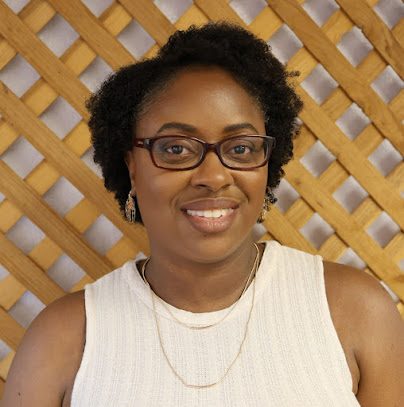Abandonment wounds are emotional scars left by experiences of feeling unsupported, rejected, or left alone, especially during childhood. They can shape how we view ourselves and interact with others well into adulthood.
What Are Abandonment Wounds?
Abandonment isn't always about being physically left. It can also mean feeling emotionally unsupported or disconnected from caregivers. This can happen in many ways:- A parent who's physically present but emotionally distant
- Inconsistent care or attention
- Loss of a loved one
- Divorce or separation of parents
- Feeling unimportant or overlooked in the family
Signs You May Have An Abandonment Wound
Abandonment wounds often show up in our adult lives in subtle ways. You might recognize some of these signs:- Intense fear of rejection or being alone
- Difficulty trusting others
- Tendency to people-please or become clingy in relationships
- Push-pull behavior (wanting closeness but also fearing it)
- Feeling unworthy of love or support
- Anxiety or panic when a loved one is away or unreachable
- Difficulty expressing needs or setting boundaries
How Abandonment Wounds Affect Adult Relationships
Abandonment wounds can significantly impact our adult relationships. They might lead you to:- Avoid deep connections out of fear of getting hurt
- Become overly dependent on partners or friends
- End relationships preemptively to avoid being left
- Struggle with jealousy or need constant reassurance
- Have difficulty being alone or single
The Body-Mind Connection in Abandonment Wounds
Abandonment wounds aren't just emotional - they're stored in our bodies too. This is why understanding the body-mind connection is crucial for healing.When we feel triggered by abandonment fears, our bodies often react before our minds do. You might notice:
Recognizing these bodily signals is a key step in managing abandonment fears. It allows you to pause and respond thoughtfully rather than react from a place of old pain.
- A tightness in your chest
- A knot in your stomach
- Shallow breathing
- Muscle tension, especially in your shoulders or jaw
- A feeling of heaviness or emptiness
Recognizing these bodily signals is a key step in managing abandonment fears. It allows you to pause and respond thoughtfully rather than react from a place of old pain.
Healing from Abandonment Wounds
Healing from abandonment wounds is possible. Here are some steps you can take:- Develop self-awareness: Start noticing your patterns in relationships. When do you feel most triggered? What thoughts and feelings come up?
- Practice self-compassion: Remember, your reactions come from a place of past hurt. Be kind to yourself as you work through these feelings.
- Build self-trust: Learn to rely on yourself for emotional support. This doesn't mean you don't need others, but it helps create a stable foundation.
- Set healthy boundaries: Practice saying no and expressing your needs. This helps build trust in relationships.
- Challenge negative beliefs: Question thoughts like "I'm unlovable" or "Everyone leaves me." Are they really true?
- Seek support: Working with a therapist or coach can provide valuable guidance and support in this process.
How Trauma Response Mapping Can Help
One powerful tool for understanding and healing abandonment wounds is trauma response mapping. This approach helps you identify how past experiences show up in your current life.Trauma response mapping involves:
- Identifying triggers: What situations or interactions bring up abandonment fears?
- Noticing physical sensations: How does your body react when you feel triggered?
- Recognizing emotional responses: What feelings come up?
- Observing thought patterns: What beliefs or thoughts accompany these feelings?
- Examining behaviors: How do you typically act when feeling abandoned or fearing abandonment?
Trauma response mapping can be especially helpful for abandonment wounds because it addresses both the emotional and physical aspects of your experiences. It recognizes that healing happens not just in our minds, but in our bodies too.
Next Steps: Your Embodied Healing Blueprint
Understanding abandonment wounds is a crucial step towards healthier relationships and a more fulfilling life. But knowing where to go from here can be challenging.That's where the Embodied Healing Blueprint comes in. This free 45-minute consultation is designed to help you:
www.nadiajcharles.com/blueprint
By the end of our conversation, you'll have a clear understanding of where you are in your healing journey and what steps you can take to move forward. You'll gain insight into the specific ways your abandonment wounds are still influencing your life, and where the greatest opportunities for transformation lie.
Healing from abandonment wounds is possible. With the right tools and support, you can build the secure, loving relationships you've always wanted - starting with the relationship you have with yourself.
- Gain clarity on how abandonment wounds are specifically showing up in your life
- Identify key areas where focused work can create the most significant shifts
- Create a personalized roadmap for your continued healing and growth
www.nadiajcharles.com/blueprint
By the end of our conversation, you'll have a clear understanding of where you are in your healing journey and what steps you can take to move forward. You'll gain insight into the specific ways your abandonment wounds are still influencing your life, and where the greatest opportunities for transformation lie.
Healing from abandonment wounds is possible. With the right tools and support, you can build the secure, loving relationships you've always wanted - starting with the relationship you have with yourself.


No comments: